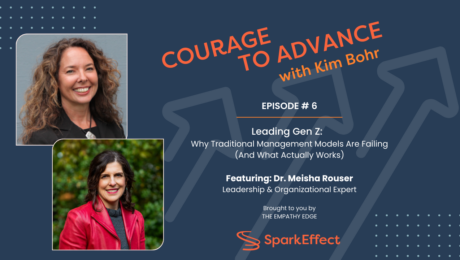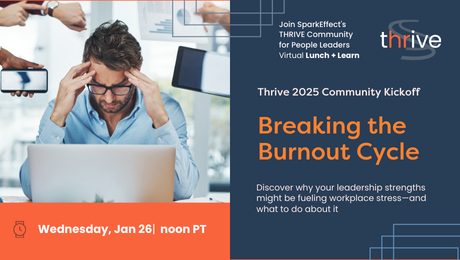In today’s rapidly changing business landscape, the traditional approach to CEO evaluations is undergoing a significant transformation. While financial metrics and key performance indicators (KPIs) remain crucial, forward-thinking organizations are recognizing that these numbers alone don’t tell the whole story. To truly assess a CEO’s effectiveness and ensure long-term organizational success, boards are increasingly adopting a more comprehensive evaluation approach that considers both the “what” and the “how” of leadership.
The Limitations of Traditional Evaluations
Historically, CEO evaluations have primarily focused on quantifiable results – revenue growth, profit margins, market share, and other financial metrics. While these indicators are undoubtedly important, they provide an incomplete picture of a leader’s performance and an organization’s health. As Sandy Stelling, a multi-board director, astutely noted, “When we talk about sustainable organizations and their ability to grow, just hitting the numbers isn’t going to guarantee success. It’s important, but it isn’t the whole story.”
This narrow focus on outcomes can lead to short-term thinking and potentially detrimental behaviors. A CEO might achieve impressive financial results in the short term but do so in ways that undermine long-term sustainability, employee morale, or organizational culture.
The Essential Skills: Beyond the Balance Sheet
Modern CEO evaluations are beginning to place greater emphasis on what were once dismissively called “soft skills” but are now deemed essential skills for any leader. These include emotional intelligence, communication abilities, empathy, and the capacity to build and lead high-performing teams.
These skills are critical because they directly impact a CEO’s ability to:
- Navigate change and uncertainty
- Foster innovation and adaptability within the organization
- Build strong, cohesive leadership teams
- Engage and motivate employees at all levels
- Manage stakeholder relationships effectively
The How Matters as Much as the What
A key shift in CEO evaluation methodology is the growing recognition that how results are achieved is as important as what is achieved. This approach considers the processes, decisions, and leadership behaviors that contribute to organizational outcomes.
For instance, a CEO might meet all financial targets, but if they do so through unsustainable practices, by fostering a toxic work environment, or by sacrificing long-term investments for short-term gains, the board needs to take notice.
Incorporating performance metrics beyond just ‘what’ is achieved offers distinct advantages for CEOs. This comprehensive approach illuminates their leadership effectiveness through measurable staff engagement and organizational culture indicators. It fosters agency and buy-in. “By actively participating in defining these metrics, CEOs gain meaningful input into their own evaluation framework,” notes Kim Bohr, President of SparkEffect and leading advisor on CEO performance assessment.
Data-Driven Insights with a Human Touch
This evolved approach to CEO evaluation doesn’t minimize data—it enriches it. By integrating quantifiable metrics of a scored 360-degree assessment from leadership teams and stakeholders, it creates a more comprehensive performance picture. The most effective frameworks convert qualitative insights into measurable data points while expanding the scope of evaluation.
As Sandy Stelling notes, “Data is only useful if you can translate it into actionable information. That’s where all the nuance and complexity lives.” This underscores the importance of not just collecting data, but interpreting it thoughtfully within the context of the organization’s goals, challenges, and culture.

Courage to Advance Podcast
Episode 1: KPIs Don't Tell the Whole Story: Why Your CEO Evaluation Is Falling Short
Watch on YouTube
Building Trust and Fostering Growth
A robust CEO evaluation process strengthens board-CEO relationships. When both CEO and Board Chair help select the assessment criteria – truly unique to the role of a CEO – it creates a transparent environment for candid dialogue about performance. This collaborative approach fosters trust and promotes a growth mindset.
The most successful CEOs see opportunity in the process to also build trust with their teams. Kim Bohr notes her experience, “CEOs I work with who believe in transparency and share their results with their direct leadership team benefit the most from this process. The vulnerability displayed shows strength and opens important conversations that may otherwise have been missed, creating greater alignment within the team.”
This level of transparency can cascade throughout the organization, setting a tone of openness, accountability, and continuous improvement.
Moving Beyond Metrics to Meaningful Evaluation
As organizations navigate increasingly complex and rapidly changing environments, the way we evaluate CEO performance must evolve. By looking beyond simple financial metrics to consider the full spectrum of leadership effectiveness, boards can better ensure their organizations are well-positioned for long-term success.
This more holistic approach to CEO evaluation not only provides a clearer picture of organizational health and leadership effectiveness but also aligns with the growing recognition that businesses have responsibilities beyond just profit generation. In doing so, it helps create more resilient, adaptable, and ultimately successful organizations ready to meet the challenges of the future.






